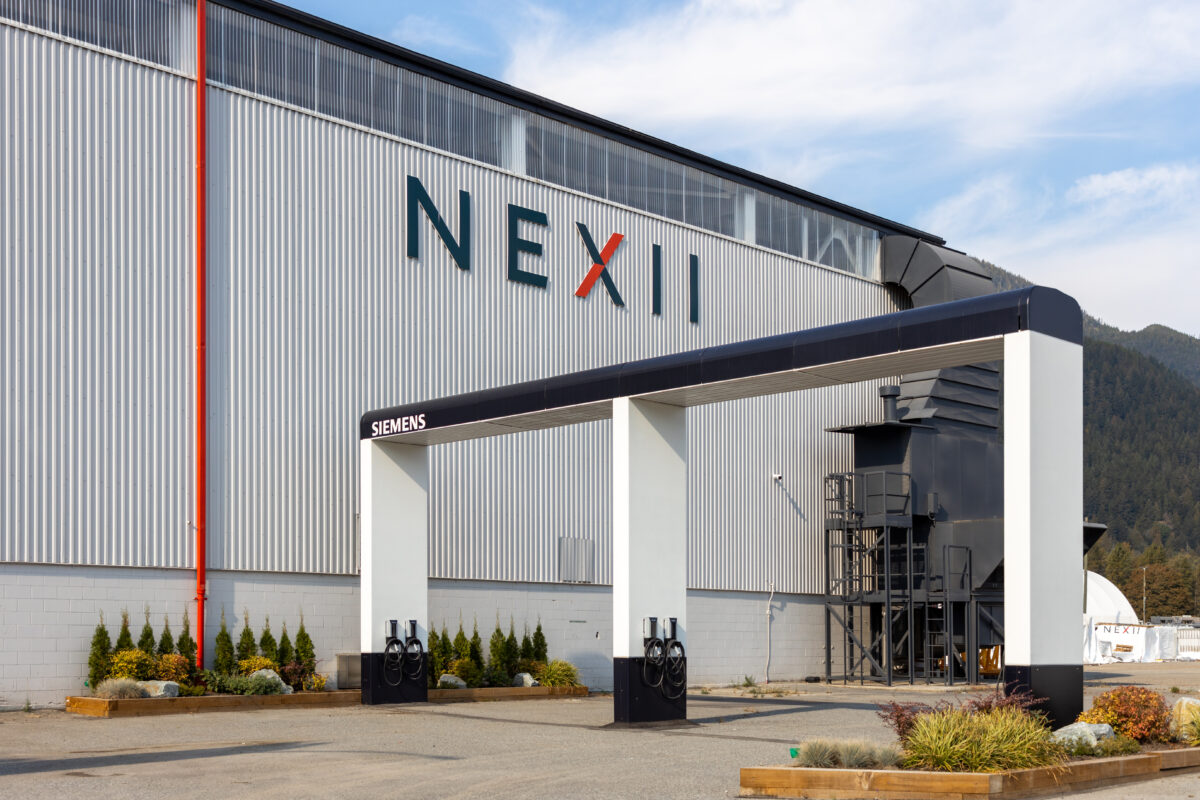
Siemens has announced commercial availability of the VersiCharge XL, a sustainable electric vehicle (EV) charging structure designed for electrifying fleets at high demand charging sites.
Designed and produced in partnership with Vancouver’s Nexii Building Solutions, VersiCharge XL is the first EV charging structure that is comprised of sustainable, low carbon building materials with a modular and scalable design that allows for quick and efficient installation and maintenance.
VersiCharge XL contains all the necessary electrical infrastructure components to provide power to EV chargers in an above ground, enclosed, and durable design. The charging station power supply can easily be deployed in existing or new parking lots and building structures, requiring minimal disruption to existing environments by removing costly, time-consuming, and substantial civil works and reduces on-site construction waste and environmental impact.
Once installed, the VersiCharge XL can provide the power to charge a large number of EVs including buses, trucks and other medium and heavy-duty vehicles in environments ranging from last mile logistics hubs to malls, airports, or stadium parking lots.
An alternative infrastructure in the market today would often require trenching and excavation work, which can cause significant disruption to roads and businesses. This can lead to increased costs and longer installation times. In addition, trenching and excavation work can also be a source of environmental concerns.
VersiCharge XL is created using Nexii’s building material Nexiite, which has comparable properties to concrete with significantly less embodied carbon.
“This collaboration combines Nexii’s breakthrough building technology with Siemens’ expertise in electrical infrastructure to create a product that not only provides the power for electric vehicle chargers more efficiently but also seamlessly integrates with our sustainable building solutions,” said Gregor Robertson, EVP of Strategy and Partnership at Nexii.
“Our EV charging infrastructure results in 45% less embodied carbon pollution when disassembled for reuse. This will revolutionize the way we supply power to charge our electric vehicles, making sustainable transportation more accessible and convenient for all.”
First introduced as a prototype last year, the concept was installed in just three days at Siemens eMobility R&D hub and North American headquarters for Siemens Electrical Products in Georgia.

Leave a Reply